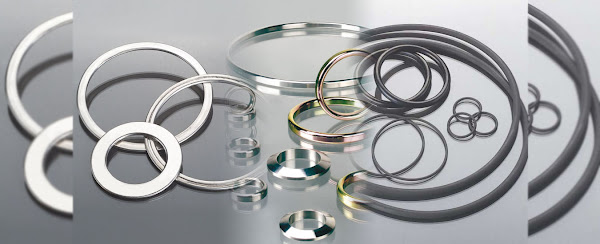A Step-by-Step Guide to Installing Gaskets Correctly - Gasco Inc
Gasco Inc, a well-known Indian company, establishes the standard in the industry as the leading Gasket Manufacturers in India. Their commitment to delivering top-quality products is evident in their meticulous attention to detail and unmatched precision in creating their items.
We are deeply proud of our position as Gasket Suppliers in India, as we are committed to upholding strict standards to ensure complete accuracy. Every aspect is meticulously examined, and our unmatched precision distinguishes us from others.
We rely on these principles to uphold our reputation as a respected Gasket Manufacturer in Mumbai and Gasket Manufacturer in Pune. They act as our compass, guiding us in following rules and showcasing our commitment to excellence.
Our company is recognized as a reputable Seal Ring Manufacturers in India. These seal rings find extensive use in a variety of industries, including plumbing, hydraulics, and aerospace. We are also a top leading Gasket Manufacturer, offering a diverse selection of gaskets such as Ring Joint Gaskets, Metal Jacketed Gaskets, Flexible Graphite Gaskets, and Ceramic Gaskets.
Tips For Installing Gaskets
Gaskets play a critical role in ensuring the proper functioning of various mechanical systems by creating a seal between two mating surfaces. Whether you're working on an automotive engine, plumbing fixtures, or industrial machinery, installing gaskets correctly is essential to prevent leaks and maintain optimal performance. In this guide, we'll take you through the step-by-step process of installing gaskets with precision and care.
Choose the Right Gasket
It is essential to choose the right gasket for your specific needs before starting the installation. Take into account factors like compatibility with materials, temperature, pressure, and the type of fluid or gas that needs to be sealed. Make sure the gasket you select meets the criteria of your system to prevent early malfunction.
Clean the Surfaces
Proper surface preparation is key to achieving a reliable seal. Thoroughly clean and inspect the mating surfaces to remove any dirt, debris, or old gasket material. Use a solvent or cleaner recommended for the specific materials involved, such as gasket remover for stubborn residue.
Apply Gasket Sealant (If Necessary)
In certain instances, the application of a small amount of gasket sealant can improve the effectiveness of the gasket's seal and make up for slight surface imperfections. Nevertheless, not every gasket necessitates the use of sealant, so it is advisable to consult the guidelines provided by the manufacturer. If sealant is deemed necessary, it should be applied evenly and in moderation to a single side of the gasket, being cautious not to apply too much, as this could result in leaks.
Position the Gasket
Be cautious when positioning the gasket on a surface that connects with another, making sure it lines up accurately with any holes or characteristics. Pay attention to any symbols or indicators given by the maker to guarantee correct alignment. Prevent stretching or warping the gasket while installing it, as this may weaken its performance.
We offer a large range of gaskets in numerous sizes and shapes in India.
Align and Secure the Components:
After placing the gasket correctly, make sure to align the surfaces that will be joined and start connecting the parts using the right fasteners (such as bolts or nuts). Gradually tighten the fasteners in a diagonal pattern to evenly distribute the pressure and avoid any deformation of the gasket. To achieve the correct amount of pressure without tightening too much, consult the manufacturer's torque specifications.
Verify Seal Integrity :
Once the components have been firmly attached, take a careful look at the gasket to make sure it is correctly positioned and compressed. Look out for any indications of leaks or spaces between the surfaces that are joined together. If needed, conduct a pressure or leak test to confirm that the seal is reliable before activating the system.
Document and Maintain:
Record the process of installing, which includes specifying the type of gasket employed, the torque values applied, and any supplementary measures taken. This data can prove useful for later consultation or problem-solving. Routinely examine and uphold the gasketed parts to guarantee sustained efficiency and promptly resolve any problems that arise.
We now offer shipping services to the countries mentioned beneath:
There is a range of materials available for gaskets, including rubber, cork, paper, metal, and composites. The material chosen depends on the specific purpose, as each one possesses its own distinct characteristics and advantages. For example, rubber gaskets are perfect for situations requiring flexibility and protection against chemicals, whereas metal gaskets are suitable for environments with high temperatures and pressures.
Gaskets are vital in various industries and applications as they effectively seal and stop leaks, guaranteeing the efficient operation of machinery. These custom-made seals are designed to meet specific needs, whether it's fitting into tight spaces or accommodating uneven surfaces. Circular, oval, square, and rectangular shapes are all available, offering a wide selection of gaskets to meet different requirements and circumstances. With their variety of materials, gaskets provide a reliable and flexible solution for all sealing requirements.
To learn more, visit our website: gascogaskets.com
.png)


.png)
Comments
Post a Comment